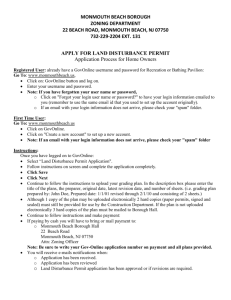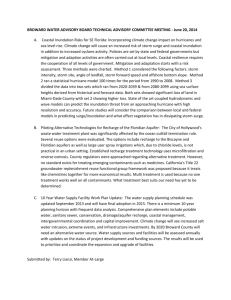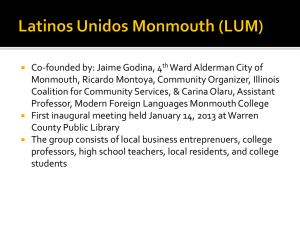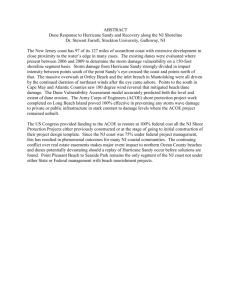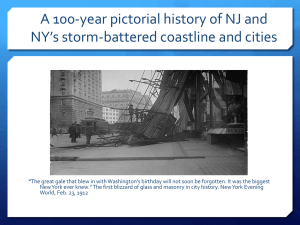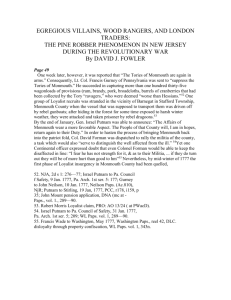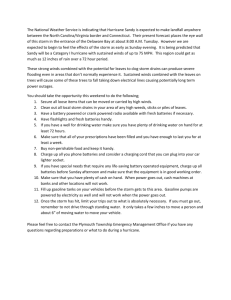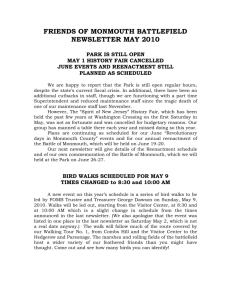Monmouth County Plan for the next disaster
advertisement
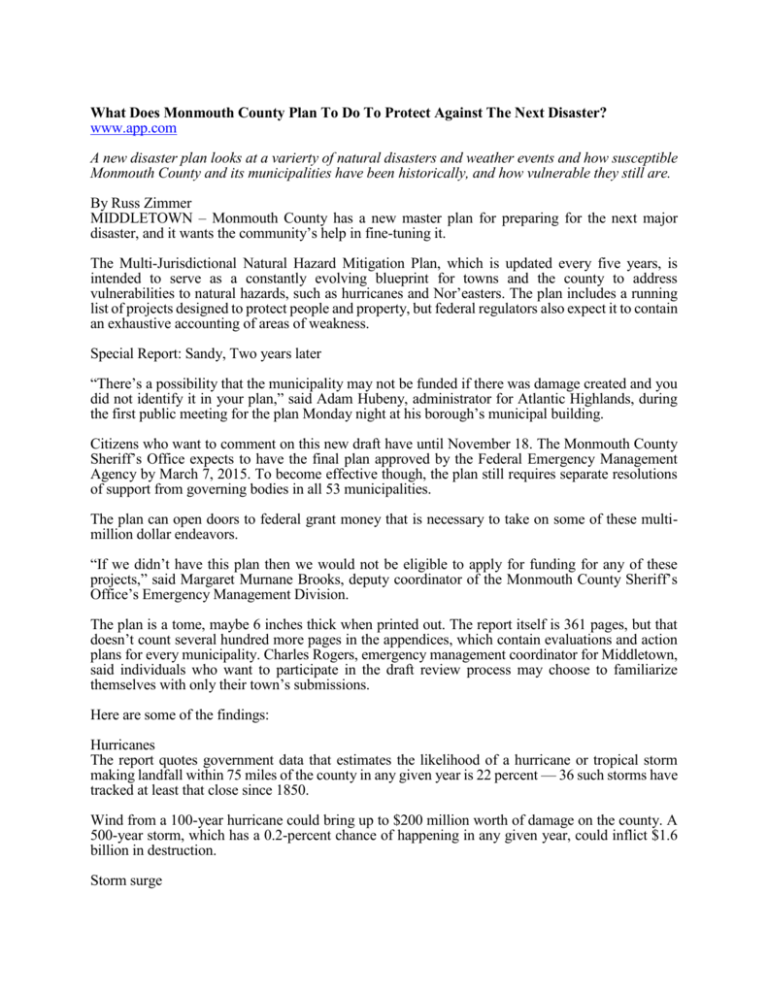
What Does Monmouth County Plan To Do To Protect Against The Next Disaster? www.app.com A new disaster plan looks at a varierty of natural disasters and weather events and how susceptible Monmouth County and its municipalities have been historically, and how vulnerable they still are. By Russ Zimmer MIDDLETOWN – Monmouth County has a new master plan for preparing for the next major disaster, and it wants the community’s help in fine-tuning it. The Multi-Jurisdictional Natural Hazard Mitigation Plan, which is updated every five years, is intended to serve as a constantly evolving blueprint for towns and the county to address vulnerabilities to natural hazards, such as hurricanes and Nor’easters. The plan includes a running list of projects designed to protect people and property, but federal regulators also expect it to contain an exhaustive accounting of areas of weakness. Special Report: Sandy, Two years later “There’s a possibility that the municipality may not be funded if there was damage created and you did not identify it in your plan,” said Adam Hubeny, administrator for Atlantic Highlands, during the first public meeting for the plan Monday night at his borough’s municipal building. Citizens who want to comment on this new draft have until November 18. The Monmouth County Sheriff’s Office expects to have the final plan approved by the Federal Emergency Management Agency by March 7, 2015. To become effective though, the plan still requires separate resolutions of support from governing bodies in all 53 municipalities. The plan can open doors to federal grant money that is necessary to take on some of these multimillion dollar endeavors. “If we didn’t have this plan then we would not be eligible to apply for funding for any of these projects,” said Margaret Murnane Brooks, deputy coordinator of the Monmouth County Sheriff’s Office’s Emergency Management Division. The plan is a tome, maybe 6 inches thick when printed out. The report itself is 361 pages, but that doesn’t count several hundred more pages in the appendices, which contain evaluations and action plans for every municipality. Charles Rogers, emergency management coordinator for Middletown, said individuals who want to participate in the draft review process may choose to familiarize themselves with only their town’s submissions. Here are some of the findings: Hurricanes The report quotes government data that estimates the likelihood of a hurricane or tropical storm making landfall within 75 miles of the county in any given year is 22 percent — 36 such storms have tracked at least that close since 1850. Wind from a 100-year hurricane could bring up to $200 million worth of damage on the county. A 500-year storm, which has a 0.2-percent chance of happening in any given year, could inflict $1.6 billion in destruction. Storm surge More than 21 percent of the county’s total building value ($55.1 billion) is imperiled by a storm surge from a named storm, like Sandy or Hurricane Irene. Flooding Two out of every three properties in the county that have filed two or more significant floodinsurance claims in a 10-year period are in Highlands (219 such properties) or Sea Bright (191). According to the report, a property in Keyport has filed 21 claims of at least $1,000 within a decade’s time and another in Sea Bright reported 14 such losses. The two were paid out a combined $1.3 million. Nor’easters If there is a storm identical to the Nor’easter of December 1992, which caused extreme coastal flooding and extensive beach erosion, the model used in the plan expects more than $55 million in property damage from the winds alone. Coastal erosion The report cites National Climate Data Center estimates that show the average New Jersey beach was 30- to 40-feet narrower after Sandy. Beach replenishment projects, like the work that was completed this summer in the Port Monmouth section of Middletown, can lessen the effects of coastal erosion. However, it’s expensive — the state and the U.S. Army Corps of Engineers expect to spend nearly $1 billion on 11 coastal protection projects — and coastal erosion events are likely to be potent in the future because of climate change and rising sea levels. Russ Zimmer: 732-557-5748, razimmer@app.com Want to help shape disaster planning in your community? The draft plan is posted on http://www.monmouthsheriff.org/Sections-read-144.html. The public has until November 18 to review and comment on the plan. Comments can be directed to oemmitigation@mcsonj.org or to your municipalities emergency management coordinator. National Flood Insurance Program payments In trying to identify and prepare for possible natural threats to the area, Monmouth County’s Hazard Mitigation Planning Committee looked at the number of flood-insurance claims in the county. Here’s the top 10 municipalities by money paid out through August 31: Town Total Policies Payments (2008) Payments (2014) All 23,474 $76,881,948 $852,907,567 Monmouth Beach 1,835 $11,060,063 $101,407,912 Manasquan 1,579 $6,103,304 $97,262,608 Sea Bright 1,183 $11,560,466 $80,324,453 Union Beach 1,200 $2,276,597 $78,501,450 Highlands 1,163 $5,904,615 $66,379,151 Rumson 628 $5,012,777 $59,688,550 Oceanport 718 $6,684,169 $59,225,948 Middletown 2,807 $2,842,987 $53,585,376 Long Branch 2,171 $4,463,572 $49,594,207 Keansburg 1,919 $200,032 $42,979,526 Source: Monmouth County Hazard Mitigation Plan Estimated losses from hurricane storm surges Most of the damage done during superstorm Sandy was attributable to the storm surge and highvelocity waves. Five towns in Monmouth County are completely exposed to a damaging storm surge. Town Total building value (in millions) Category 1 (in millions) Category 2 Category 3 Category 4 All $55,141 $3,525 $5,944 $8,684 $11,676 Keansburg $350 $268 $339 $349 $350 Loch Arbour $39 $8 $25 $34 $39 Monmouth Beach $453 $392 $436 $453 $453 Sea Bright $238 $218 $238 $238 $238 Union Beach $256 $127 $223 $251 $256 Source: Monmouth County Hazard Mitigation Plan
